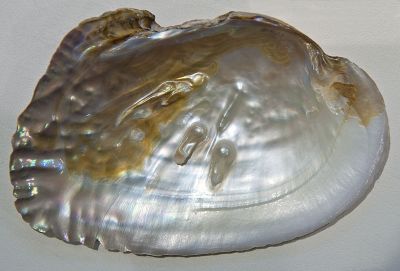Bio-inspired nanocomposites

Mother-of-pearl_internal-beads, fot Autor Hannes GrobeAWI (Praca własna) [CC BY 3.0
Natural composites such as bone and mother-of-pearl (nacre) combine strength and toughness with self-healing ability. Scientists developed novel processes to make bio-inspired composites for potential energy, sensing and biomedical applications.
Lightweight sustainable structural materials support advances in
applications from electric vehicles and biomedical implants to wind
turbines. A key challenge is the inherent lack of strength associated
with porous materials. Scientists launched the EU-funded project
'Advanced composites inspired by nature' (ACIN) to develop new
processing techniques for bio-inspired ceramic-based nanocomposites that
replicate the toughening mechanisms seen in nature with unprecedented
mechanical properties.
Researchers focused on a combination of freeze casting and spark plasma sintering. Freeze casting has gained interest in recent years particularly for ceramics and hybrid ceramic-polymer composites.
In this simple process, a suspension is frozen and then the water is sublimated to produce porous structures. This can be done with excellent structural control. Spark plasma sintering is a revolutionary new high-speed powder consolidation process relying on self-heating action inside the powder. Lower temperatures are required for shorter periods of time compared to conventional sintering methods.
Scientists first studied the effects of processing conditions and suspension composition on the architectures of freeze-casted scaffolds made of ceramics and nanocarbon-based materials. Insight guided development of methods to align ceramic layers (lamellae) during freezing. Work on ceramics and nano-structured carbon led to development of high-performance porous silicon carbide structures of different morphologies. Researchers also developed a novel method to fabricate highly structured and electrically conductive ceramic-carbon composites.
Attention then turned to the use of spark plasma sintering to increase the density of the ceramic-carbon composites. The team successfully produced nacre-like brick-and-mortar structures with ceramic bricks and thin carbon layers. Finally, researchers developed complex cellular networks based on graphene and having tuneable physical properties. The team investigated their potential as sensitive, electrically conductive skin-like nanocomposites with self-healing capabilities.
ACIN's bio-inspired advances in porous and highly controlled ceramic and nanocarbon composites and processing pave the way to high-strength multifunctional systems for a variety of applications. They may help meet some of the most important challenges in energy production and transport, orthopaedic implants and even electronic skin.
published: 2015-06-05